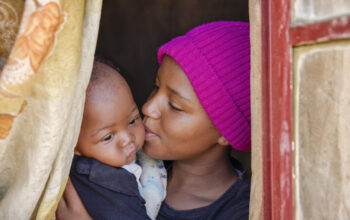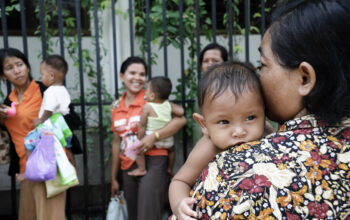Let’s fast track new approaches to achieve UHC and beat NCDs
Since the start of the 21st century, Gavi, the Vaccine Alliance, has transformed lives, preventing more than 10 million potential deaths. In 2002, when AIDS, TB and malaria appeared unstoppable, the Global Fund to fight these three fatal diseases was created and since then has saved millions of lives – 27 million as of 2017. Thereby helping to revitalize entire communities, strengthen local health systems and improve local economies.
These two global health-focused alliances were trailblazers, pioneering partnerships between governments, civil society, the private sector and patients. Such partnerships have yielded results so why not replicate this tried and tested model to tackle the chronic non-communicable diseases (NCDs) such as cancer that cause 41 million global deaths each year, with 15m of these “premature” deaths hitting people aged 30-69 and 85 per cent of them occurring in low- and middle-income countries (LMICs)?
The simple answer is that the task is simply too big and too urgent. We definitely need these alliances but we also new models to facilitate collaborative efforts by governments, NGOs and industry. During the current World Health Assembly Executive Board meeting, Dr Tedros, Director General of the World Health Organization (WHO) repeated his call for such vital collaboration:
“Working with the private sector is a must especially given the commitment made as a global community in 2015 when the WHO and others endorsed the SDGs (Sustainable Development Goals). The SDGs cannot be realized without involvement of all folks, including the private sector.”
The call to break down the barriers is not new – today’s challenge is that we need to change the way we look at the cost associated with the scale of the task. We need to factor in a “new health economy” that treats better health as an investment, not a cost.
New Models of Collaboration
The urgent task now is to take steps to strengthen health systems for NCDs, particularly highlighting local needs and the perspectives of NCD patients while respecting nationally identified priorities. Experience shows that a coordinated response is the only way to engage effectively and sustainably with the systemic challenges posed by NCD prevention, treatment and care. No individual stakeholder can single-handedly address NCDs.
The biopharmaceutical industry is ready and willing to be a meaningful and solutions-oriented partner in developing appropriate and affordable solutions at global and local levels within the context of Universal Health Coverage (UHC). A good example of this is Access Accelerated[1] (AA), a public-private partnership working to reduce barriers to prevention, treatment and care for NCDs in lower- and middle-income countries by strengthening health systems and aligning with UHC objectives.
A new “health economy”
NCDs constitute 70 per cent of health-related deaths but receive less than 1.3 per cent of the development assistance within global health budgets. Globally, failure to act on the prevention and control of NCDs could bring an output loss of approximately USD 47 trillion from 2011 to 2030, or the equivalent of 5 per cent of global GDP.
Thus, financing a sustainable “health economy” from national resources requires concerted efforts from governments and private sector. For example, President Nana Akufo-Addo has recently set out his vision for Ghana to thrive beyond reliance on foreign aid. This can be a win-win model where private sector invest in business models tailored to local needs and thrive while delivering lasting benefits to the economies in which they operate.
Last year in August, IFPMA organized together with the WHO and UNICEF a joint workshop to discuss in concrete terms how we can work towards developing solutions to bottlenecks, gaps, and other challenges in advancing supply chain capacity, including in areas such as human resource development, data availability and stewardship, integration of NCD medicines in national and vertical supply chains.
Ultimately, the health economy’s most valued assets are people. Investing in training skilled community healthcare providers enables delivery of diagnostic and preventative care and enables the necessary follow-ups to give the right treatments to patients. This investment results in healthier and more productive communities which, in turn, benefit the overall economy.
Dr Tedros is rightly warning: “The clock is now ticking on the ambitious targets we have set ourselves for the next five years: 1 billion more people benefiting from universal health coverage”.
This ambitious goal must galvanize all actors towards achieving UHC, including vital access to affordable and quality-assured medicines, vaccines and health products. (To find out more, check out IFPMA’s statements on UHC and NCDs)
The first-ever United Nations high-level meeting on UHC this September will be an important milestone where the entire global health community must come together to emphasize the importance of health not just for its own sake, but as a key to sustainable development and economic growth.
[1] https://accessaccelerated.org/wp-content/uploads/2018/05/Access-Accelerated-Year-One-Report.pdf
Author






